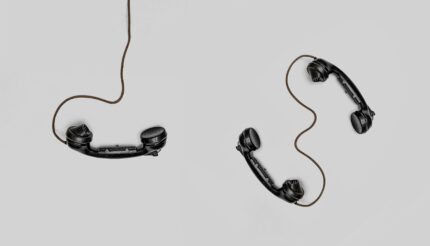There are 6 steps you need to take to make your Loyalty Strategy as effective as possible, here are the first 3 steps!
1. WHY use a Loyalty Strategy?
Before you implement Loyalty Strategies, you need to figure out if they are worthwhile within your business, here are a few things to think about before you make your decision.
Frequently Purchased Product: Hairdressers, restaurants and grocery shops are all excellent examples of when a Loyalty Strategy would work well. On the other hand, real estate agents and car dealers are examples of businesses that will struggle with such an idea. The infrequent shopping habits of these businesses mean that loyalty there isn’t one you can see much success from. There are things you can do to remind them of you, but a loyalty card will be all but meaningless – you can’t expect people to hold onto it for 25 years.
Floating Customers: If all of your customers are already loyal, there’s no real point in offering them anything else. You may want to send them a gift, or a thank you card occasionally, but a ‘every ‘x’ purchase is free’ deal is unnecessary. You need customers who aren’t regular, so they have new business to give to you, and Loyalty Strategies are a way to turn them into regular customers, earning their business that was perhaps split between a few similar businesses.
Margins To Play With: If you went by the above criteria alone, it would seem that petrol stations are ideal for a loyalty system – they have a frequently purchased product and floating customer base. The fact is, there is no margin in petrol, and thus, no chance of offering anything worthwhile. They could offer £1 off every 10th purchase of fuel, but who’s going to care? You need healthy margins so that you can offer something attractive.
A Good Product Or Service: If your product or service has flaws in it, you’ll do more to damage your reputation than enhance it. Added to that, people will not make use of your loyalty system. They’ll try you once then leave you for someone who can deliver what they promise. Get your quality up, then worry about getting your customers back.
2.WHO are your target market?
You have to know who you’re marketing to, there’s no point in a company that builds in-ground swimming pools marketing to a high-rise block of flats. You have to know your audience and spot your prospects so you can cater to them in a way they find relatable, increasing their interest in what you have to offer.
Age: How old are they? Saying ‘all ages’ or ‘a variety’ helps nobody, you need to create a mental picture of your average customer. Think of an age that symbolises most of your customers.
Sex: Are they male, female, neither? ‘A mix’ is too broad. Most businesses have a more common gender of customer, don’t cater to people who aren’t giving you business.
Income: Is quality of the product the big issue for your customers, with the price being irrelevant? Or are bargain hunters your biggest asset, searching for the best deals out there? It’s essential that you find this out.
Location: Are they local, or do they come from miles around to deal with you? No point aiming your marketing around local knowledge if they don’t live anywhere near you.
3.WHAT can you offer them?
The two things you need to do in order to make your system work are:
a) Do everything you can to improve what you’re selling. Give the best quality product/service you can for the price you are selling for, always take time to improve your service, build rapport with and be genuinely interested in what the customer wants. This is the best way to ever build loyalty.
b) Work out what you can offer the customer for their loyalty. This will give them the feeling of being part of something special and let them know that they are valued. It also gives them the idea that they are ‘spoken for’. For example, imagine a florist that offers a free carnation, sent to anyone in the local area, every time a VIP member orders. When another florist comes along making offers, the customer will block them out – they already ‘belong’ to a florist.
Finding the most appealing, generous yet not too damaging offer can be difficult, here are some ideas for what might be best for you.
a) A free service or product … make sure the free giveaway, if given out frequently, won’t ruin your business. How quickly will they be offered this freebie? Immediately? After ‘x’ purchased?
b) Free delivery … how much would it cost you to deliver the product free? Will their loyalty give you more business than free delivery takes away?
c) Something extra with every sale … put a small, uncostly item in with every sale, this could serve as just a thank you, or could introduce the customer into a different area of your product range they had not yet explored.
d) A free service with another non-competitive business … in many cases, you’ll get this free. The other business could offer a free service in order to tap into your customer list.
e) Use a lucky dip system … to determine the value of the lucky dip items, do the following – work out how much profit you’ll make from 100 sales. Now decide how much of that profit you can afford to put back into your loyalty system. Divide that figure by 100 – you now have the approximate value of each lucky dip item.
f ) Give your customers the VIP treatment … perhaps they’ll receive a complimentary muffin and cup of coffee while they wait, a little something to enhance their visit.





